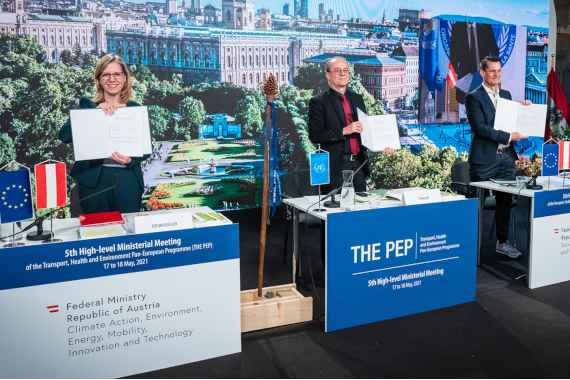Despite significant technological improvements in terms of efficiency of motorised vehicles in recent decades, the problem of emissions caused by traffic has not lost its urgency. The increasing volume of traffic, registration figures and the average vehicle weight mean that, among other things, transport remains a focus of climate protection policies.
A simple but efficient way of reducing CO2 emissions and exhaust emissions in the transport sector is eco-driving, also referenced as smart or modern driving. This concept can be applied by any driver in daily practice with all vehicles and under all traffic conditions – without expensive investments in infrastructure or new vehicle technologies.
Experience from eco-driving initiatives all over Europe show that car, truck and bus drivers can easily reach a fuel reduction of up to around 20% by exercising an energy efficient driving style. These findings are supported by evaluations of training programmes, inter alia by training results of THE PEP (Transport Health and Environment Pan-European Programme) eco-driving pilot seminars, indicating average fuel reductions of 6 – 22 %. Furthermore, achieved savings appear to vary individually to a large extent, e.g. going up to more than 30 % for some drivers.
Thus, eco-driving is an extremely cost-effective way to reduce CO2 emissions in the transport sector – in particular when compared to replacing vehicles with lower emission alternatives.
What are the benefits of eco-driving?
Eco-driving has multiple benefits: improved traffic safety, reduced driving stress and greater comfort for drivers and passengers, smoother traffic flow and less congestion, lower fuel consumption and operating costs, and lower carbon dioxide emissions and health risks.
Eco-driving still allows a high degree of flexibility and individuality. What’s more, all the advantages mentioned can be achieved with the same or shorter driving time. Driver training courses show that eco-drivers often reach their destinations faster. This is mainly due to the acceleration of the traffic flow and the avoidance of stops.
Golden Rules of Eco-driving
The so called “Golden Rules of Eco-driving”, are presented below in brief:
- Greater anticipation in order to avoid unnecessary acceleration and braking and make maximum use of the vehicle's momentum
- Maintain a steady speed at low RPM (revolutions per minute)
- Shift up early (by approximately 2,000 RPM)
- Check tyre pressures frequently
- Remember all ancillary loads add to fuel consumption (electrical equipment, air conditioning, carrying dead weight, etc.)
Beyond these driving techniques, there are further ways to increase energy-efficient use of, such as:
- Fuel saving starts with choosing a low-emission car,
- Avoid short car trips as cold engines need much more fuel per km,
- Organise a carpool, and
- Consider alternative means of transport (cycling, walking, public transport, car sharing)
Eco-driving training covering these techniques are typically offered in either full-day training courses covering both theory and practice, or an intensive one-on-one training in driving techniques and habits lasting usually one hour.
The importance of eco-driving with electric vehicles
In recent years, electric vehicles (EVs) have been seen as promising in reducing transport-related energy consumption, pollutant emissions and noise. If the electricity is generated from renewable energy sources, virtually emission free mobility becomes possible. On the other hand, practical experience of training providers shows that significant additional energy savings can be achieved without loss of time by applying eco-driving techniques specifically targeted at EVs. Furthermore, energy-saving driving has a much more positive impact on EVs than on conventional models, as efficient driving increases the range of the vehicles, which is still seen as a major disadvantage of e-vehicles by potential users.
Core guidelines for implementing a national eco-driving initiative
The UNECE/WHO THE PEP Partnership, launched in 2014, on eco-driving is a dedicated framework aiming to share information and best practice examples, and organise joint efforts for harmonisation of eco-driving initiatives. The Partnership has a strong focus on exchanging experiences among interested partners for the promotion for eco-driving, as well as supporting the establishment of eco-driving trainings and education seminars for driving trainers.
A joint activity, the ‘THE PEP Policy recommendations for eco-driving’, was adopted at ministerial level as an annex to the Vienna declaration ‘Building forward better by transforming to new, clean, safe, healthy and inclusive mobility and transport’ at the Fifth High-level Meeting on Transport, Health and Environment in Vienna in May 2021. The recommendations include the following core implementation steps for establishing a successful and long-lasting eco-driving initiative on national level and are made available as download below.


